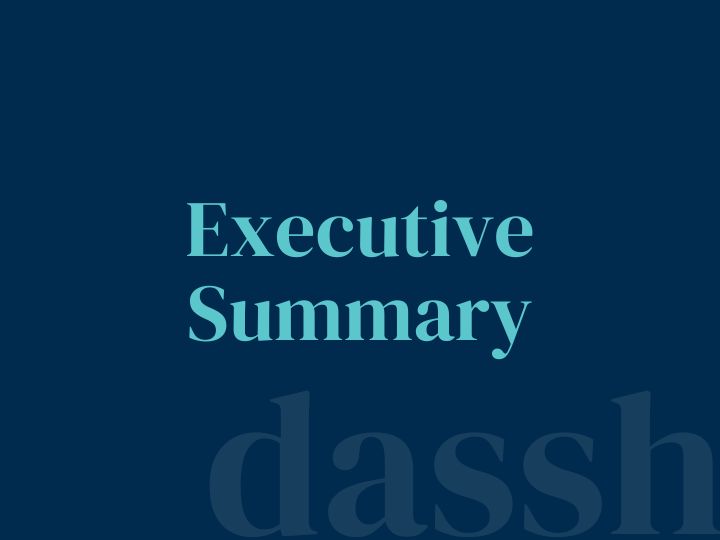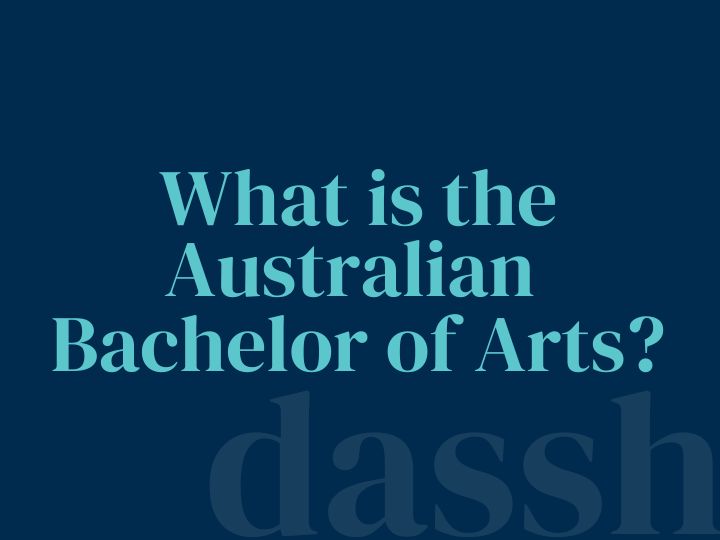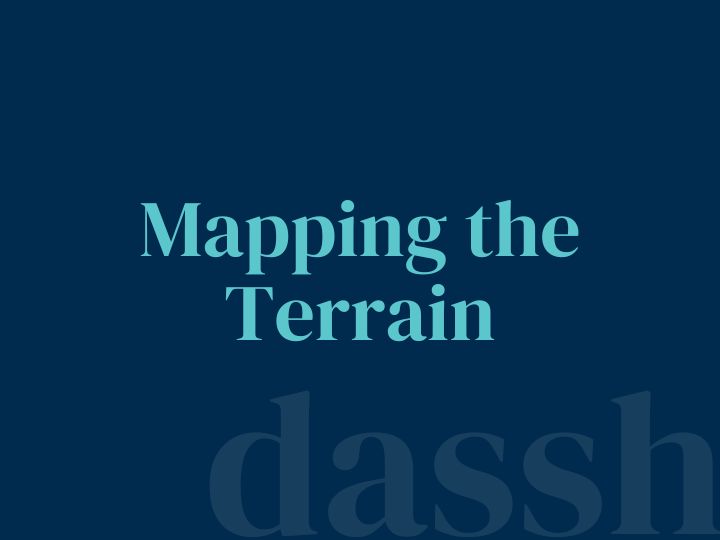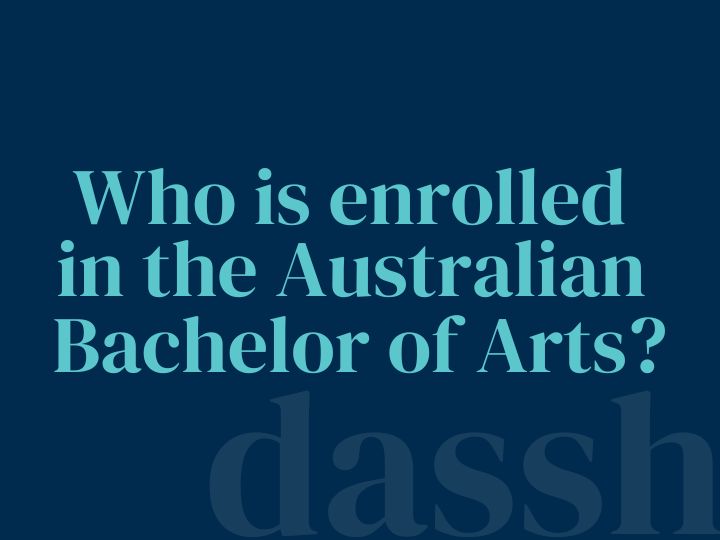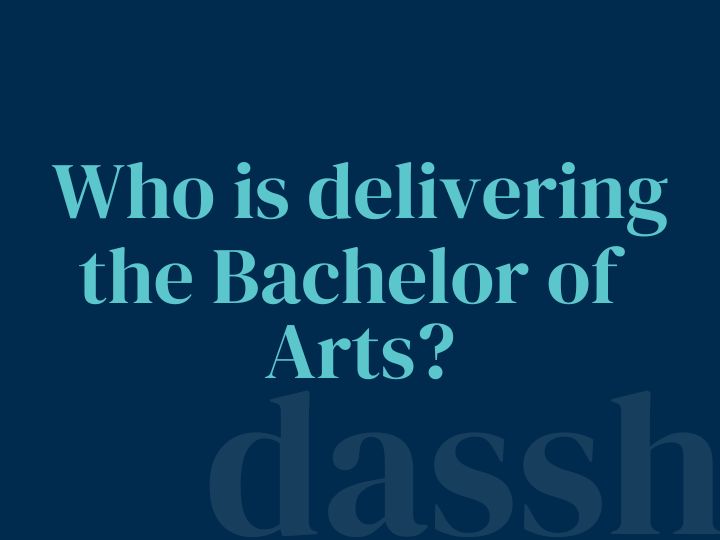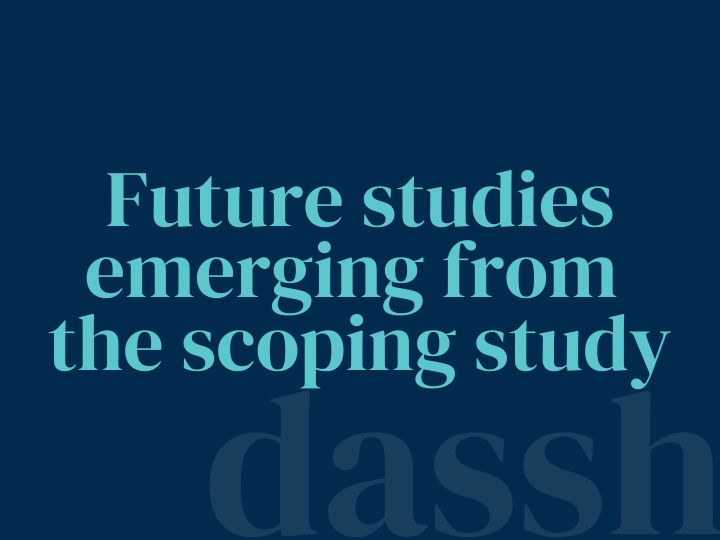This project gathered evidence to be used by decision makers across the sector to optimize future curriculum development in the light of the potential value of the Bachelor of Arts. It provided options and guidance to the sector for other crucial projects and for further work in implementation and response to future demands. An outcome of the BA Scoping Project was a clearer definition for Arts programs.
Summary Reports
The summary reports below are designed to inform Deans and decision makers for Bachelor of Arts program development. These reports are supported by datasets below.
2001-06 Data Sets
The datasets from the 2008 project are designed to enable DASSH members to interrogate the data in response to their own needs. They are offered in an excel spreadsheet format as both raw data and as pivot tables. Download the following data sets in MS Excel files.
Bachelor of Arts arranged by institution
This data set provides an overview of the programs that were investigated during this project. It is made available as a pivot table that allows for analysis of availability in 2008, student numbers 2001–2006, type of institution, state, institution and program name.
Work Integrated Learning in Arts programs
Work integrated learning as a part of an arts degree is gradually increasing in importance as a part of the learning activities in the Arts programs. In addition to industry related work experience, students are often encouraged to be involved in society or community-based programs. This dataset records the work integrated learning courses that are available to Arts students.
Graduate attributes used in Arts programs
Graduate attributes for the programs were collected from informants, via program websites and from program reviews or publicity materials. A single dataset was developed which traces the graduate attributes used by Institutions, Faculties, programs and disciplines.
Student Exchange in Arts programs
Opportunities for international exchange were recorded and are made available in a pivot table.
AUQA Audit statements
Reports from the first round of the AUQA were examined and any comments, recommendations and commendations for any features that might be identified as related to Arts programs were noted and collated into a dataset.
Disciplines taught as part of the BA as sequences of study, including core courses within programs
Sequences of study were examined to see what disciplines or subject areas form Bachelor of Arts programs. A separate worksheet lists the core or required programs identified. All data is available as a pivot table to facilitate local analysis.
Projects dealing with Bachelor of Arts
Existing projects that are funded either under ALTC funding or via institutional funds that may have some impact on Arts programs were collated into a table that uses Excel’s Autofilter feature. It is possible to sort the data by project title, lead institution, project date, funding body, grant amount, expected project outcomes, project details, project leader and contact details, and link to project URL.
Additional data sets
Bachelor of Arts Student demographics 2001–2006
DEST data on programs that fit the definition of the BA project have been made available in pivot table format. Data is available by program name across state, institution, type and mode of attendance, age and gender 2001–2006.
Graduate destinations of Arts students 2001–2006
Data from the Graduate Destinations Survey (GDS) for Arts students is available for analysis according to sector, employer, full-time and part-time employment, and salary.
GCA data on Arts student survey responses to the GDS is governed by the AVCC-GCA Code of Practice. This data is not governed by the ALTC Creative Commons Licence and may not be replicated other than by DASSH members for the purposes listed in the AVCC- GCA Code of Practice.
Academic Staff teaching into BA 2001–2006
DEST data on academic staff teaching into society and culture programs between 2001 and 2006 have been made available in pivot table format. The data includes staff by state, institution and AOU; staff by state, institution, AOU and age group; state, institution, AOU and gender; state, institution, AOU, classification level and work contract; and state, institution, AOU and function (research only, teaching only or research and teaching).
Arts Graduate satisfaction with course 2001–2006
Data from the Course Experience Questionnaire (CEQ) for Arts students is available for analysis using pivot tables. Students’ overall satisfaction with their program as measured by the Course Experience Questionnaire Overall Satisfaction Question; Students’ satisfaction with their generic skill development as provided by their program and the overall satisfaction of Arts students versus other students in the Society and Culture field of study as measured by the Course Experience Questionnaire Overall Satisfaction Question.
GCA data on Arts student survey responses to the CEQ is governed by the AVCC-GCA Code of Practice. This data is not governed by the ALTC Creative Commons Licence and may not be replicated other than by DASSH members for the purposes listed in the AVCC- GCA Code of Practice.
Using Pivot Tables
Pivot tables are based on a database of information and are designed to be interactive as you can manipulate the data included in the table to suit your needs. Thus rather than trolling through an entire database you can select which variables you wish to look at and the pivot tables displays those variables. Pivot tables allow you to analysis numerical data and to see tends in data much more easily.
Pivot Tables can be rearranged by dragging the buttons to a new position or information can be excluded by un-ticking it in the buttons drop-down box.
Case Studies
Case studies are short-focused reports, describing experiences and current practices in addressing common issues, identified during interviews and round table discussions as significant to the Bachelor of Arts. These observations are from the period the original scoping project was in progress from March 2007 to August 2008. As a result, the practices described in these case studies may vary from current practices or institutional policy.
These case studies are viewed to be dynamic documents. Changes and additional cases can be submitted for consideration to eo@dassh.edu.au.
- Retention and recruitment strategies
Of major concern to most participants in the project, was the issue of recruiting quality students to participate and to remain within the Arts programs. In order to ensure that this happens, there have been novel strategies put in place at various institutions to recruit and retain students. - Advanced studies
Interviews and round table meetings frequently referred to declining numbers of honours students in Arts disciplines and attracting and meeting the needs of exceptional students. - Administration
Communicating the course structure to students in a way that makes sense to them can be difficult. This is made more problematic by the extensive use of online enrolments where students are wholly responsible for their own enrolment. If they chose incorrectly or misunderstand the course structure they may find that they have not fulfilled the graduation requirements. These issues may be further complicated by the jargon used in the university materials a first year student is especially vulnerable to a lack of understanding of the requirements on them. Teaching staff often have the added responsibility of addressing these kinds of administrative issues. - Work integrated learning
Arts programs across the sector invariably offer some form of work integrated learning opportunity. The project team found that there were 2 main types of work integrated learning opportunities that are becoming increasingly common: Internships and Service Learning Programs. This case study explores examples of each type. - Links to community
Links with the community and with feeder schools were frequently referred to in interviews and the round table discussions as opportunities for ensuring that the local communities valued Arts programs and could lead to future recruitment. The following examples illustrate how some institutions have engaged in these strategies. - Teaching quality
Through the project, a number of strategies were identified at various institutions to ensure that teaching quality is ensured across the programs. Some of these are institutional strategies; some are Faculty or program specific. - Employability
There appears to be a general perception amongst students and the larger community that graduates of the BA are not as employable as graduates from professional degrees, as there is no clear career paths associated with an Arts program. One response to this issue has been to add professional elements into Arts programs, such as internships and capstone courses. A further aspect of this issue is getting Arts students to understand the skills they have acquired throughout their BA, so they can learn how to market themselves and those skills. - Effective use of technology
Through the round table meetings, there was repeated reference to the notion that Arts programs are increasingly making use of information and communication technologies and moving away from traditional “talk and chalk” teaching styles. The following cases illustrate how some institutions are using technology to address specific challenges. - Trans-cultural curriculum
These examples illustrate how some institutions have developed a curriculum that encourages students to work across cultures in order to develop culturally competent graduates. - Effective attention to globalisation
While there are a number of student exchange programs available, they are often very individual experiences and may not address the issue of preparing students to live in a global economy. Comments included the perception that few students took advantage of these opportunities because of financial restrictions. The following examples illustrate how some institutions have addressed these issues. - Curricula structures
Ways in which Arts curricula have been structured or modified. - Graduate attributes
It is important for students to be aware of the graduate attributes/skills/capabilities that they have developed so that they can sell themselves in the workforce and so that they have an understanding of what they have gained. It is important for students to be aware of how the attributes will be included in the course so that they can see what they are gaining is more than the knowledge needed for their final assessment. In addition, recognising these skills as they learn them is a useful skill in itself. For example in focus group 1 students saw the content of their courses as the only thing they gained from uni i.e. the things they read and had to write in exams. There was no recognition or understanding that they had also acquired skills. - Interdisciplinary learning
Different institutions manage interdisciplinarity in different ways. - Different approaches to positioning and marketing of Bachelor of Arts degrees
Three universities located in Brisbane, each competing for the same pool of domestic students, offer examples of significantly different approaches to the issues of defining fields of study and positioning and marketing Bachelor of Arts degrees.

